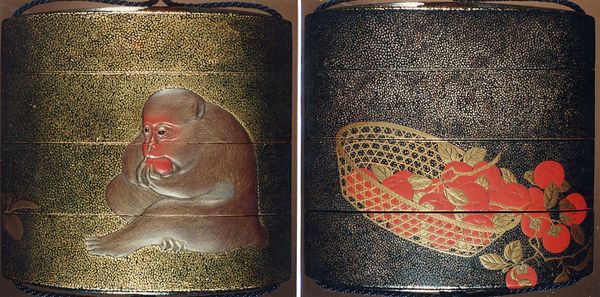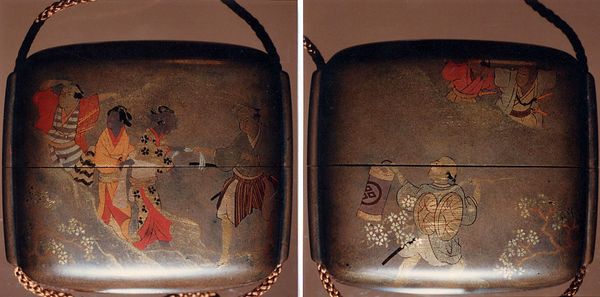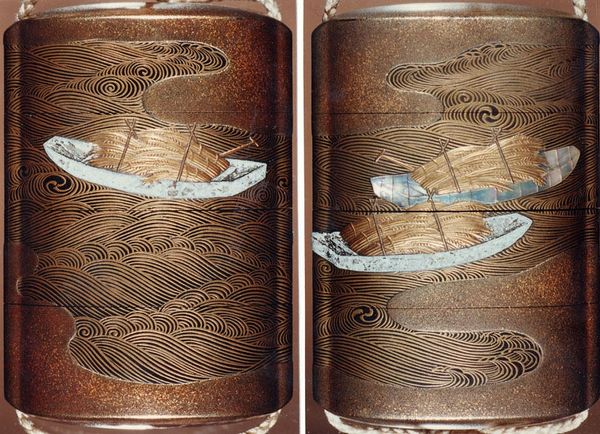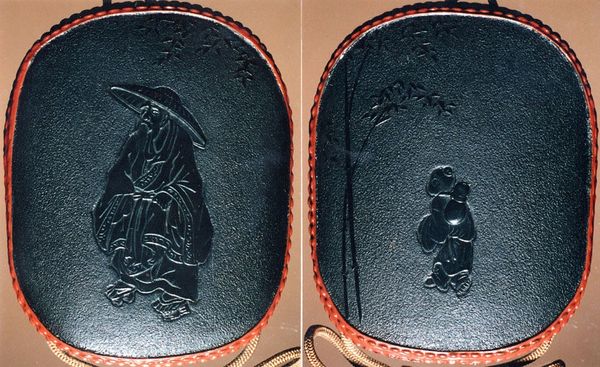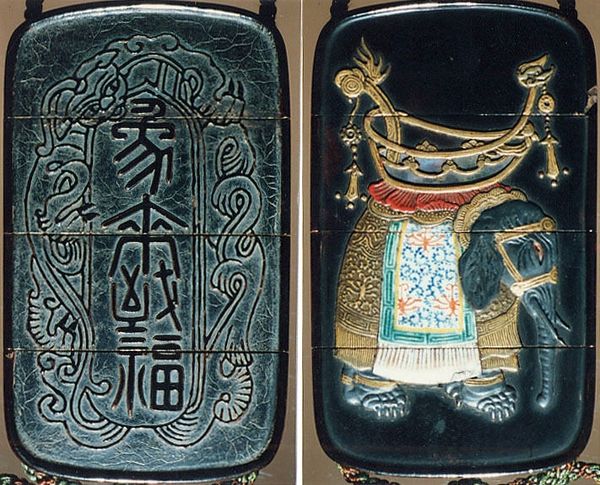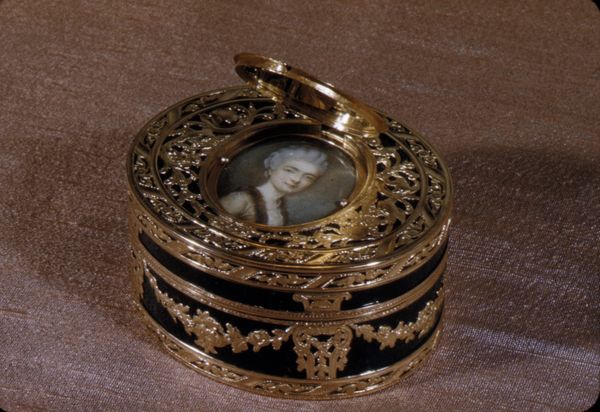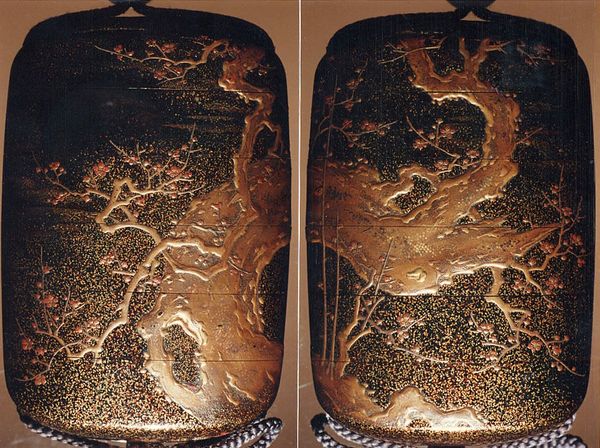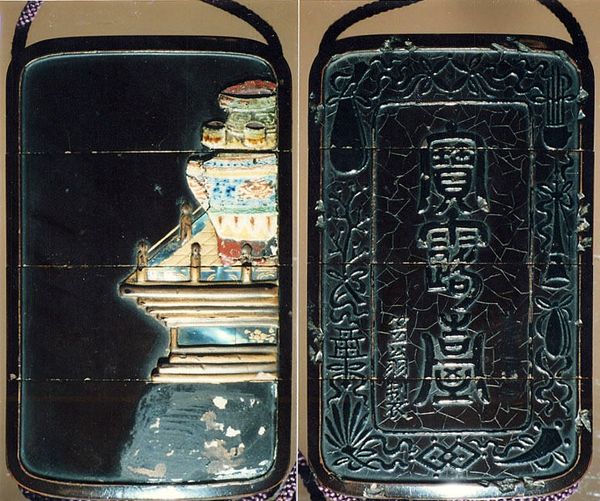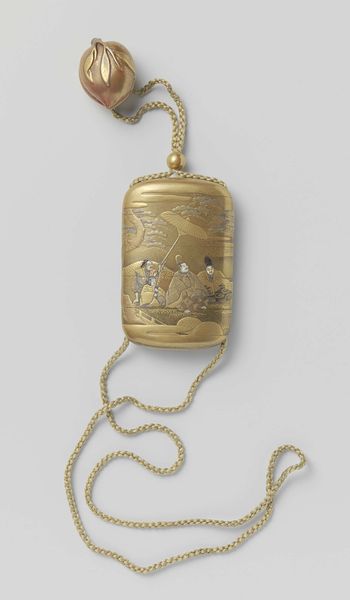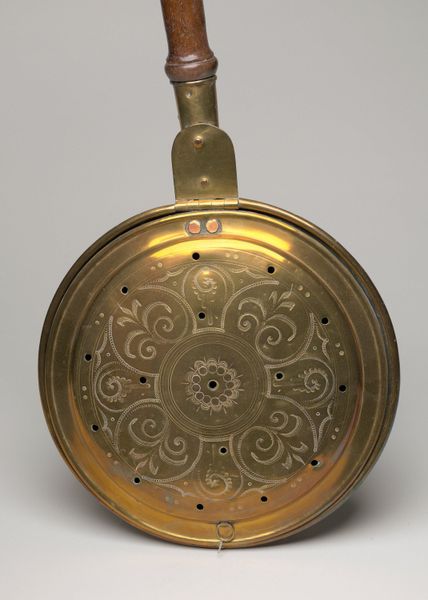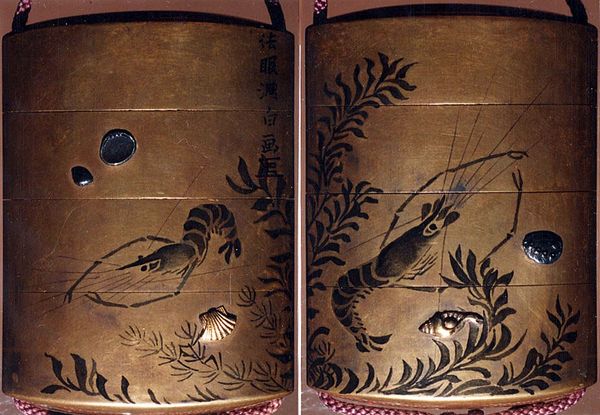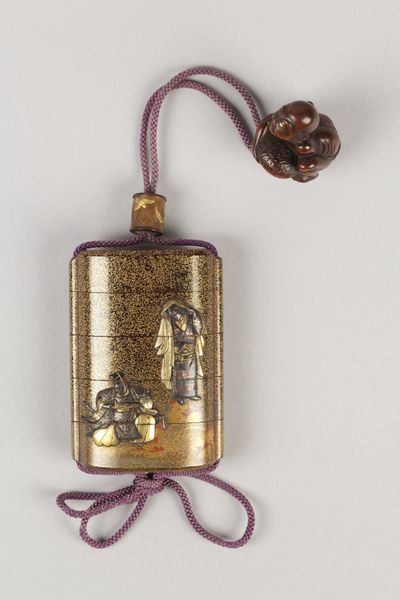
Case (Inrō) with Design of Ebisu and Daikoku Dancing beneath New Year's Decorations 19th century
0:00
0:00
drawing, intaglio, wood, engraving
#
drawing
#
intaglio
#
sculpture
#
asian-art
#
ukiyo-e
#
wood
#
decorative-art
#
engraving
#
miniature
Dimensions: 3 3/8 x 2 5/16 x 13/16 in. (8.6 x 5.9 x 2 cm)
Copyright: Public Domain
This is a small case, an Inrō, decorated with gold and lacquer, made in Japan by Nikkōsai. Its theme is Ebisu and Daikoku, two of the seven gods of good fortune, dancing under New Year decorations. Inrō cases were functional objects, used to carry personal seals and medicines. But like this example, they could also be highly decorative, and were worn as fashion accessories, suspended from the obi sash of a kimono. The choice of Ebisu and Daikoku as the theme is telling. During the Edo period, these deities became closely associated with prosperity and commerce, reflecting the values of a rising merchant class. The case is a fascinating artifact for the social historian. It can reveal a good deal about Edo-period culture, religion and economy. Further research might reveal more about the identities of Nikkōsai and their patrons, and thus help us to understand the social contexts in which such objects were made and used.
Comments
No comments
Be the first to comment and join the conversation on the ultimate creative platform.
